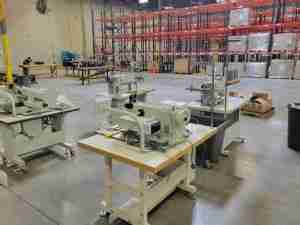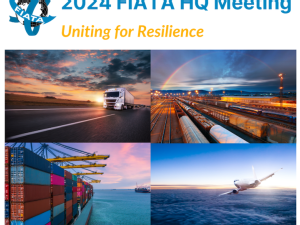Lack of Ocean Chassis at Inland Rail Ramps Proves to be a Concern
ITS Logistics, released the December forecast for the ITS Logistics US Port/Rail Ramp Freight Index. This month the index reflects normal status at all US port container dray operations, but a lack of ocean chassis availability at both the West and East Inland Rail Ramps raises alarm bells.
“Chassis at the rail ramp has been one of the biggest challenges that the supply chain industry is facing,” said Paul Brashier, Vice President, Drayage and Intermodal for ITS Logistics. “Ocean chassis in particular have become the issue. More and more freight is moving interior point intermodal (IPI) now and we are concerned about those chassis that are available in the pool. This is especially the case if the drive chassis’ (DC) stay full.”
In October, The Federal Maritime Commission (FMC) awarded a $500,000 contract to the National Academies of Science (NAS) to conduct a study that examines the intermodal chassis pools and provides recommendations on best practices for their management. Mandated under the Ocean Shipping Reform Act of 2022 (OSRA’22), under the law, the study is expected to outline the obstacles faced when implementing chassis pools and offer possible solutions that optimize supply chain information sharing across pool models, efficiency, and overall communication.
“The limited supply of chassis has contributed to port and rail congestion here in the US for over a year now and even though the FMC is addressing the chassis concerns ahead of the Ocean Shipping Reform Act’s deadline of April 2023, the impact is still being felt across the industry,” continued Brashier. “To help remedy the current lack of chassis and provide some relief, companies should work with a dray provider that has container grounding operations to keep ocean chassis moving effectively.”
To relieve container port congestion and speed cargo turnover at busy maritime logistics sites, the FMC approved a plan for East Coast seaports to operate a shared pool of truck chassis last month. This decision further supported the proposed South Atlantic Chassis Pool (SACP 3.0) deal. The deal is meant to fill the existing pool with new, high-quality chassis, and once live, it will be the largest fully interoperable pool in the country, with over 60,000 chassis available to ocean carriers, motor carriers, and shippers at various ports in inland locations. The SACP 3.00 deal has a target date of October, 2023.
“I expect to see improvement in the current chassis situation by 2023,” continued Brashier. “Thanks to Congress listening to the complaints from both shippers and truckers, the FMC is fully immersed in our current chassis issue. We are receiving the support that we need to make a change for companies to meet the needs of their customers and the new year, while it will certainly have a new set of disruptions, also looks promising in various ways too. We close 2022 far removed from where we began with lower rates, normal operations, and learned lessons.
“In the big picture, December has seen a continued improvement in marine terminal operations in all regions throughout the US,” concluded Brashier. “There is very little congestion to report, and vessel dwell time is under 2 days in every port throughout the US, excluding in Savannah, Georgia.”
The ITS Logistics US Port/Rail Ramp Freight Index forecasts port container and dray operations for the Pacific, Atlantic, and Gulf regions. Ocean and domestic container rail ramp operations are also highlighted in the index for both the West Inland and East Inland regions. Visit here for a full comprehensive copy of the index with expected forecasts for the U.S. port and rail ramps.









